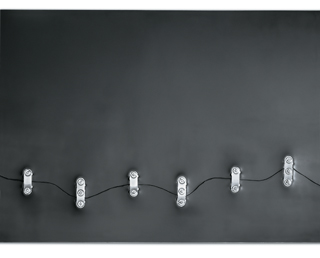Conveyor Belt Rip Repair: What You Should Know
 Broken idler rolls or jagged chunks of stone, coal, salt, and other materials can take a heavy toll on a conveyor system. If jagged-edged materials catch on your conveyor’s support structure, rips, slits, or tears can occur on the belt to the point the system must be shut down and the belt repaired.
Broken idler rolls or jagged chunks of stone, coal, salt, and other materials can take a heavy toll on a conveyor system. If jagged-edged materials catch on your conveyor’s support structure, rips, slits, or tears can occur on the belt to the point the system must be shut down and the belt repaired.
When belt damage occurs, it is critical to avoid the lengthy downtime and expensive repairs normally associated with returning conveyors to service after surprise belt rips. Whether the trouble is minor or major – a lengthwise rip, a small puncture, a soft spot or even a hole – there are rip repair methods that will temporarily preserve the integrity of the damaged belt and get it back in operation with minimal downtime.
Always remember that when a transverse tear extends in from the belt edges 25% or more across the width of the belt, the damaged area should be cut out and a new splice installed.
Pro tip: If recurring rips and tears are a problem, having a rip repair kit with installation tools and different size fasteners will enable you to respond quickly and cut downtime losses.
The use of mechanical rip repair fasteners is often a cost-effective solution to lengthwise rips and worn spots in heavy-duty belts as thick as 1-3/16” (30mm). Mechanical rip repair fasteners offer the advantages of:
- Faster installation
- Lower cost
- Virtually no belt waste
- Immediate installation by on-site workers using simple tools
Basic Rip Repair
Here are a few best practices for rip repair in a variety of applications:
- For a small puncture, apply a standard bolt solid plate fastener crosswise on the belt over the damaged area.
- For a larger size hole, a patch of belting can be attached to the original belt using bolt solid plate fasteners. Remember to apply the corners first then the remaining fasteners.
- For clean lengthwise rips, standard bolt solid plate fasteners can be applied the length of the rip. The spacing should allow no material to seep through. Here’s a great example of some lengthwise rips that needed repair.
 For jagged, lengthwise tears or bridging soft spots, integrate standard bolt solid plate fasteners with three-bolt rip plate fasteners. Note the placement of the three bolt fasteners on the rip line. Two of the three bolts should be placed along the weak or “flap” side of a jagged tear to increase stability. Alternating two and three bolt fasteners is recommended to help allow for alignment of the fastener line as close as possible.
For jagged, lengthwise tears or bridging soft spots, integrate standard bolt solid plate fasteners with three-bolt rip plate fasteners. Note the placement of the three bolt fasteners on the rip line. Two of the three bolts should be placed along the weak or “flap” side of a jagged tear to increase stability. Alternating two and three bolt fasteners is recommended to help allow for alignment of the fastener line as close as possible.- For quick temporary repairs, Turtle fasteners are recommended every four to six inches (101 to 152mm) along the rip. Keep in mind, Turtle and three-bolt rip repair fasteners should never be used for joining belt ends together. Here is an informative document that illustrates how to install these fasteners.
Rip repair fasteners keep your belt – and your production – moving until a permanent repair can be performed during scheduled downtime. Integrate bolt solid plate fasteners and rip repair fasteners into your operation and see how dramatically you can speed up your recovery from belt damage.
Authored by: Russ Heintz, Training and Technical Specialist
Russ Heintz has been with Flexco since 1995, working in various roles within the company before becoming Training and Technical Specialist. In this role, Heintz focuses on the efficiency of our products through in-house and field testing. Heintz also regularly conducts classroom and hands-on, internal or on-site training with Flexco employees, distributors, and customers.
Subscribe to the Flexco Blog
Related Blogs
Published Date
December 18, 2018Product Group
- Mechanical Belt Fastening Systems
Issues
- Belt Damage
- Downtime
- Mistracking